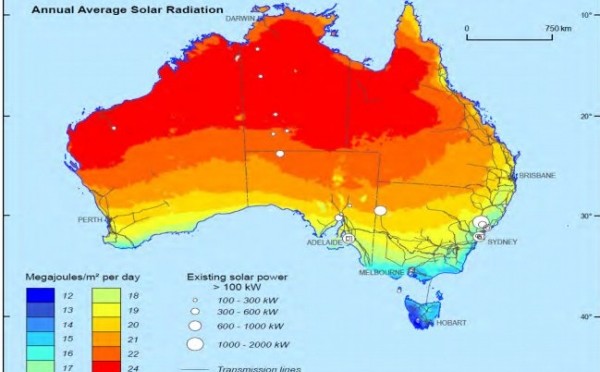
New research suggests Australians could pocket $10 billion in savings by 2050 if governments begin installing a niche form of solar power storage in the country’s major electricity networks.
That figure — produced by Fichtner and ITP Renewables on behalf of the Australian Solar Thermal Research Institute — would amount to savings of about $40 million per annum if, as the institute suggests, the Federal Government and WA State Government respectively begin rolling out concentrated solar power from 2025 and 2030.
The molten salt tower solar thermal power station is a power generation facility that uses solar energy to convert heat into electrical energy. It utilizes concentrated solar thermal technology by focusing solar energy to a central point, concentrating thermal energy into a molten salt thermal storage tank, and then converting the thermal energy into electricity.
Under that modelling, Australia would draw about 10 per cent of its total electricity needs from CST by 2050 while WA would have as much as 20 per cent of its domestic energy use covered by it.
While the report acknowledges wide uptake of CST will “likely … require policy intervention”, ASTRI director Dominic Zaal said its findings showed the technology’s “true value” and suggested CST could “save billions of dollars in reaching net zero while maximising local economic benefit and adding to diversity in energy supply”.
Mr Zaal also argued the technology could significantly lower the cost of producing other renewable energy sources, like ammonia.
“Australia has an unrivalled opportunity to become a superpower in green fuels production, which can be exported to help the world achieve emissions reduction targets,” he said.
CST power works by positioning mirrors so that sunlight reflects onto a receiver that collects and stores energy for later use.
Industry proponents argue the technology can act as a renewable form of baseload power, but some research, including an Australian Energy Market Operator-commissioned report from Aurecon in December, is considerably more pessimistic about its cost effectiveness.
There are few deployments of the technology in Australia.
It is common throughout Europe, though, and the Federal Government has subsidised Vast Solar’s construction of a 30mW/288mWh unit in South Australia.
The project is due to be completed at the end of this year.